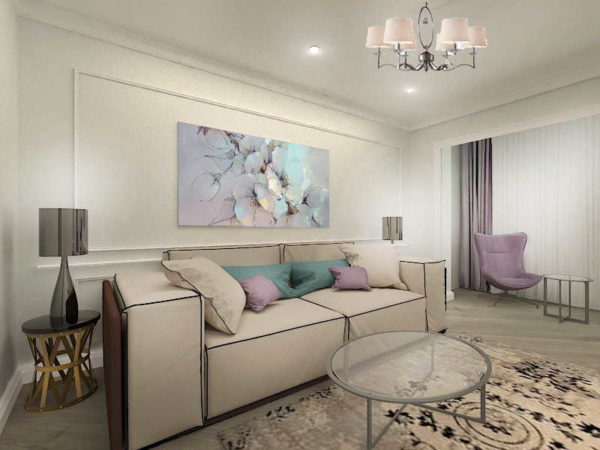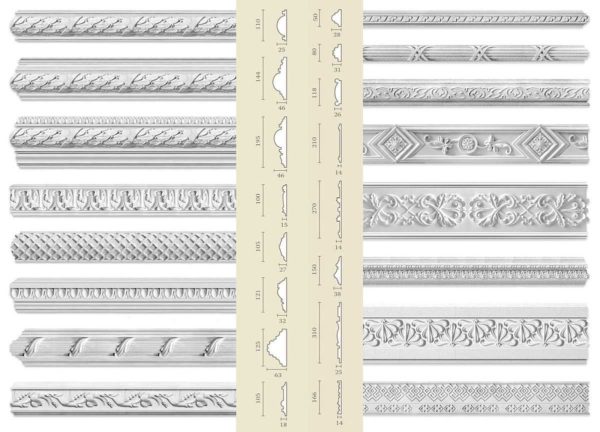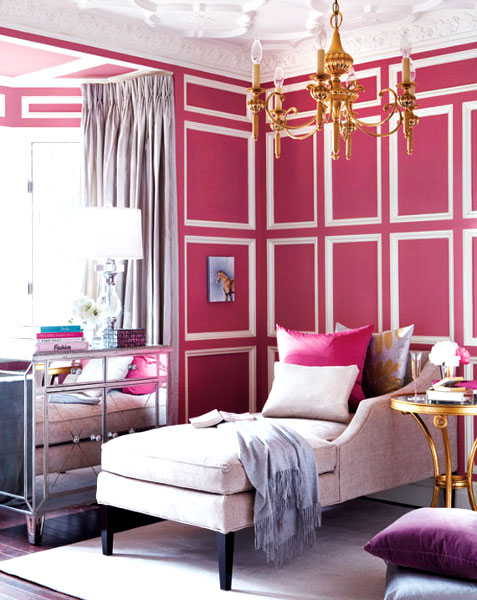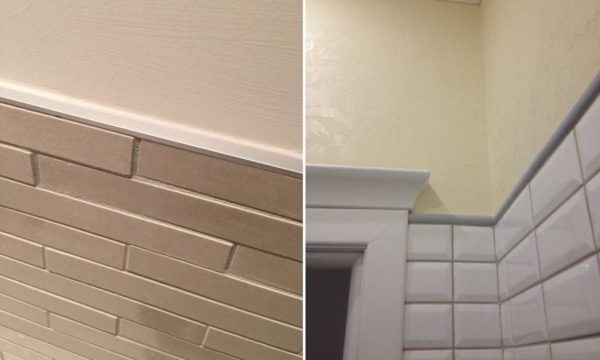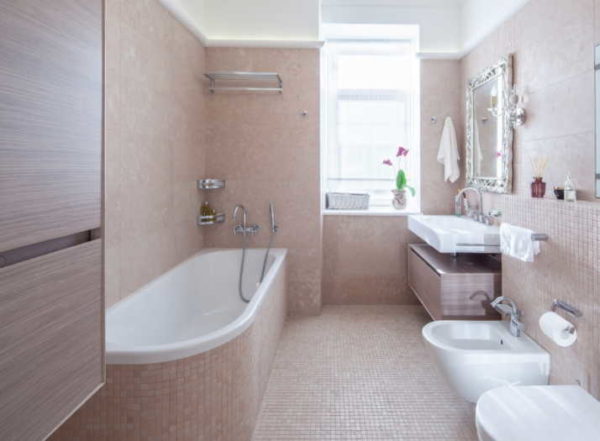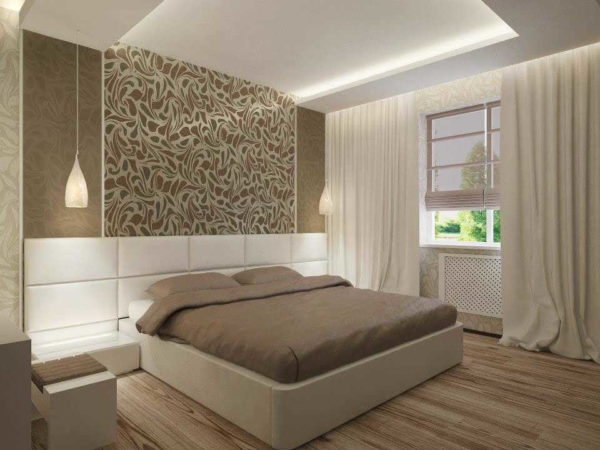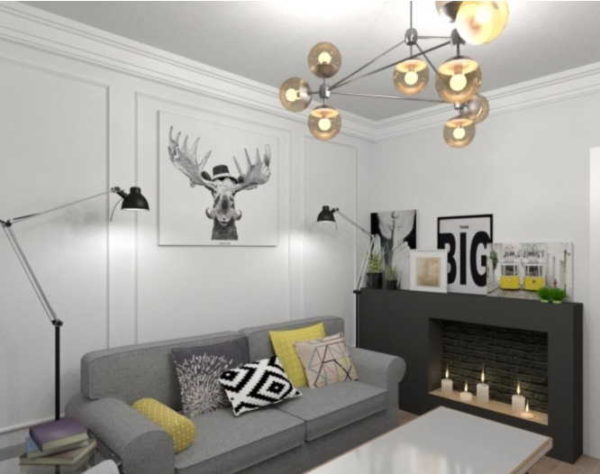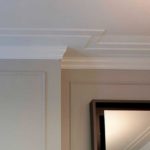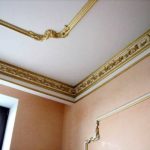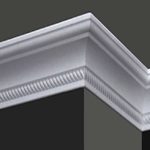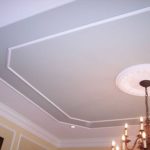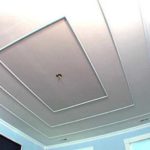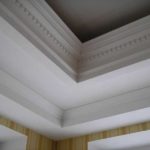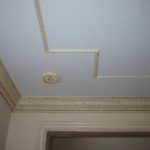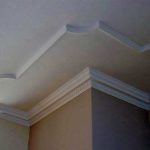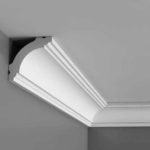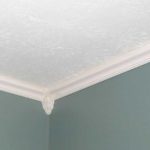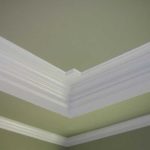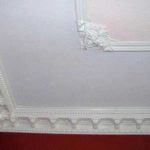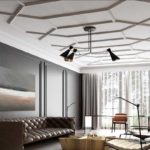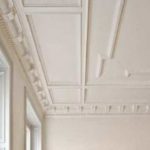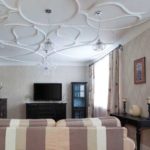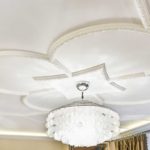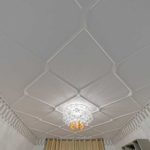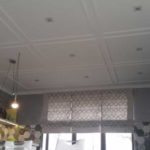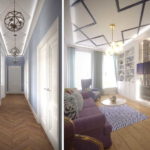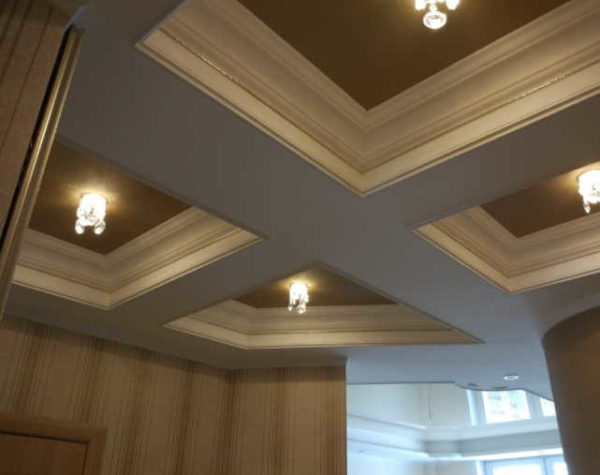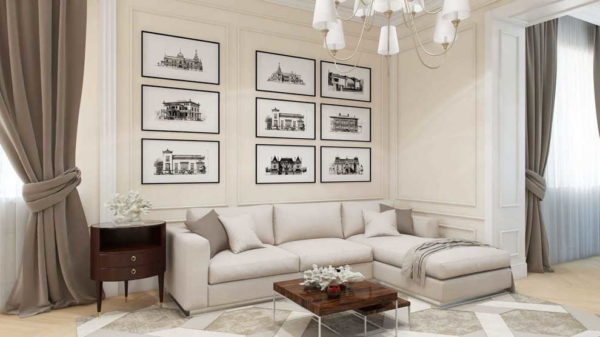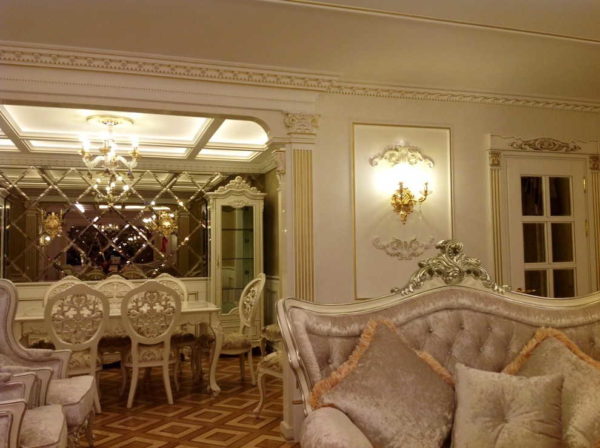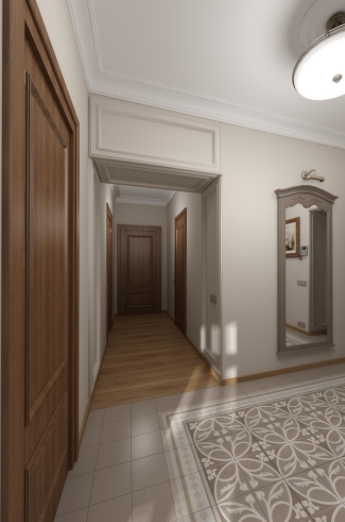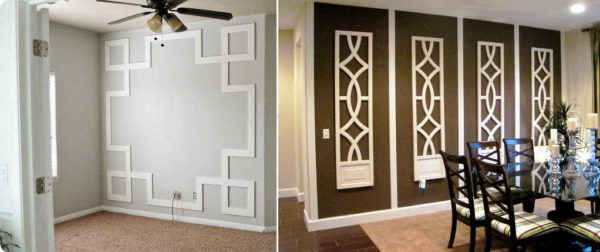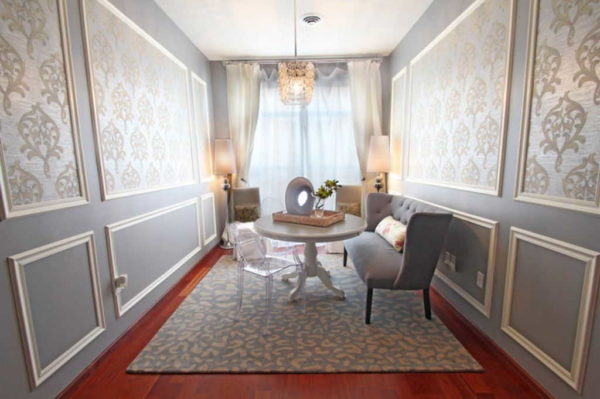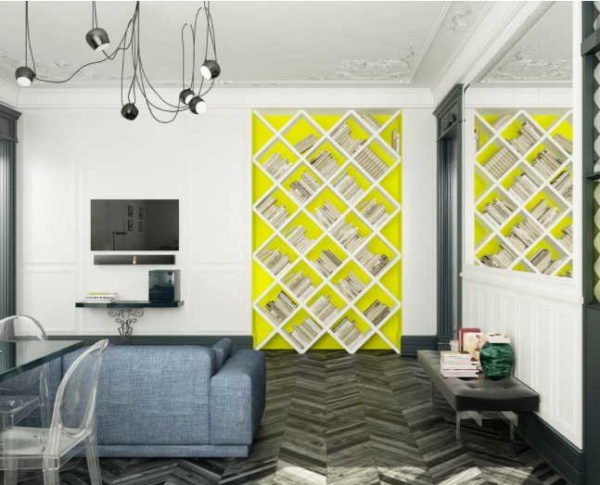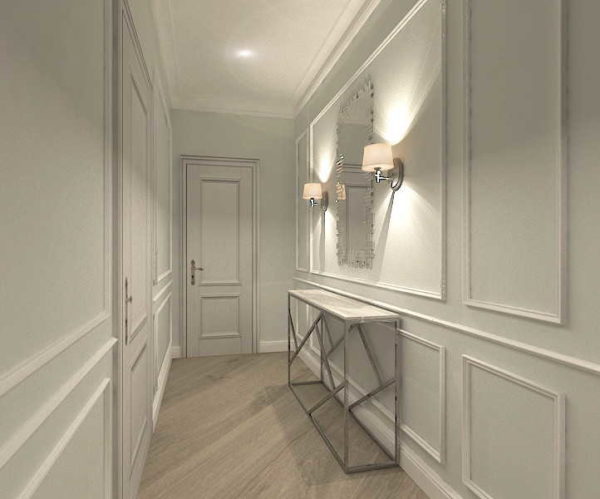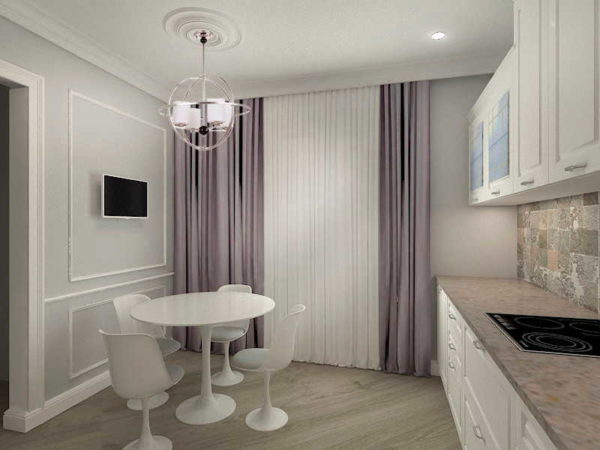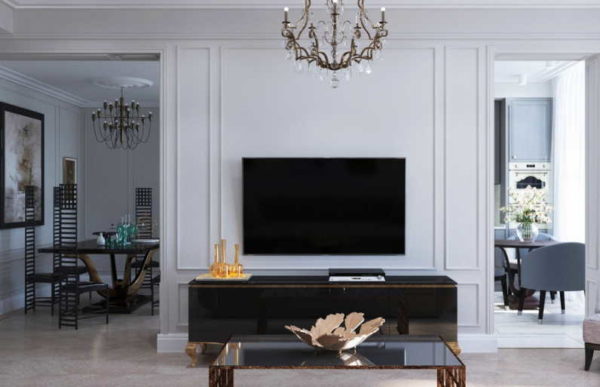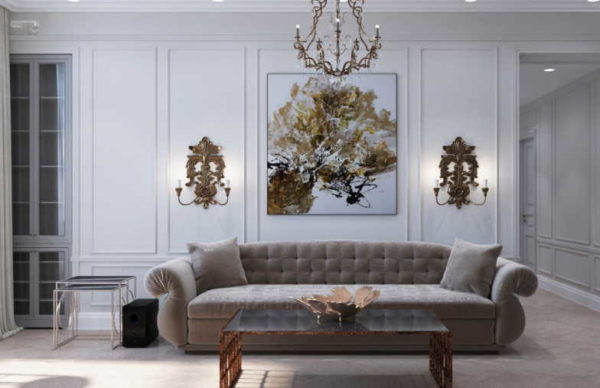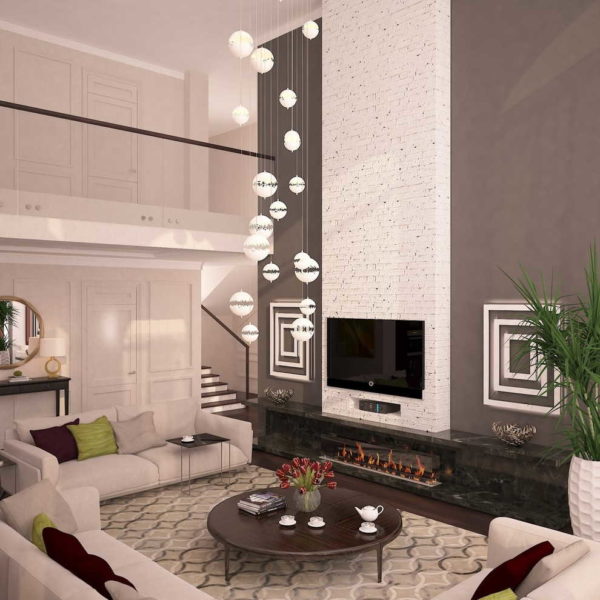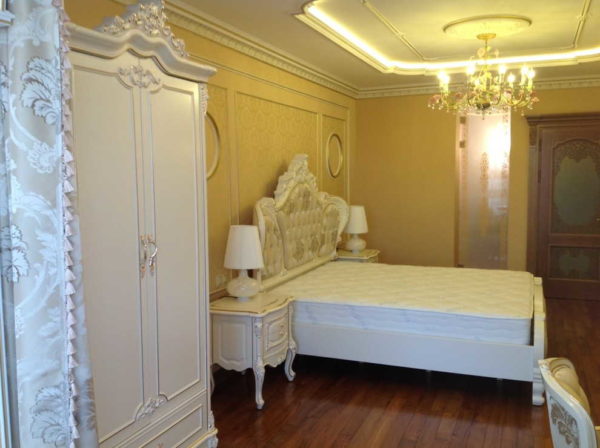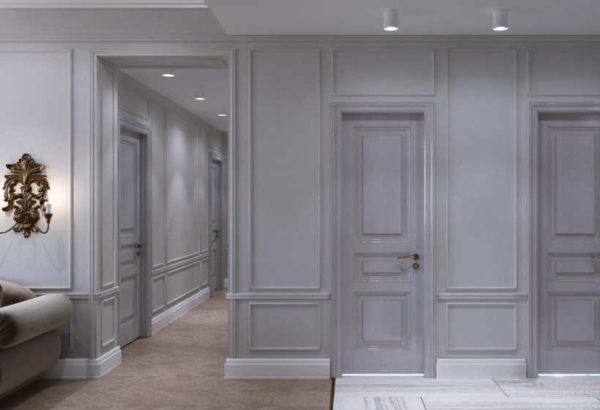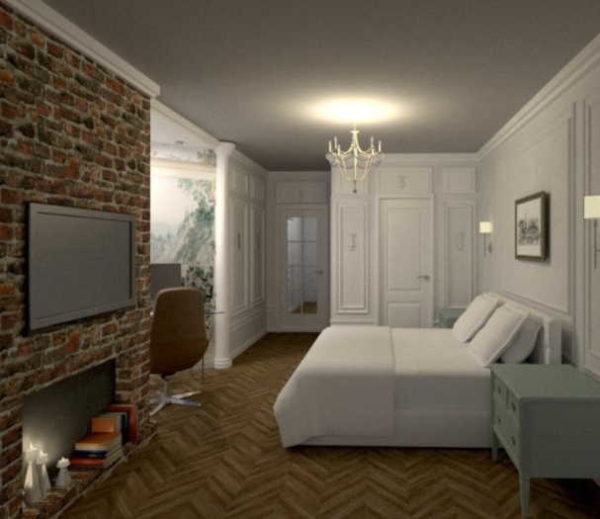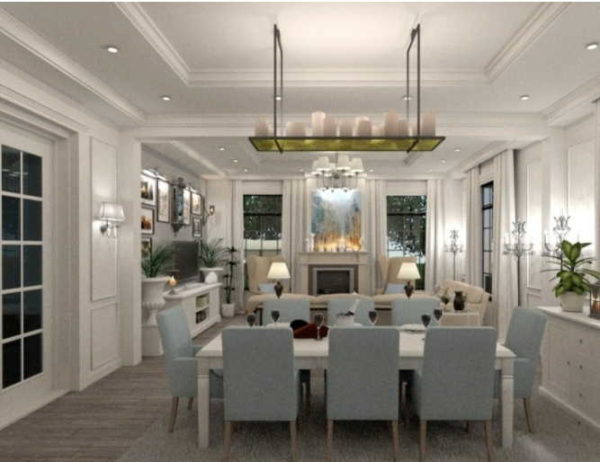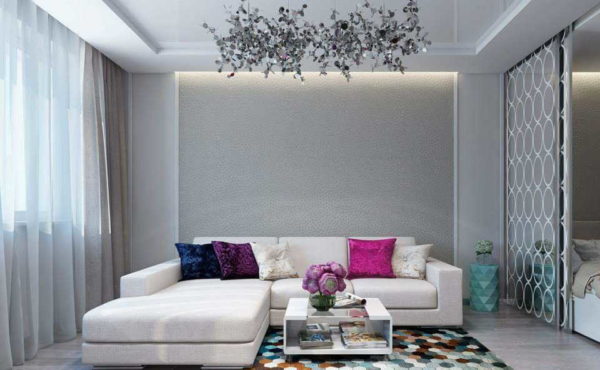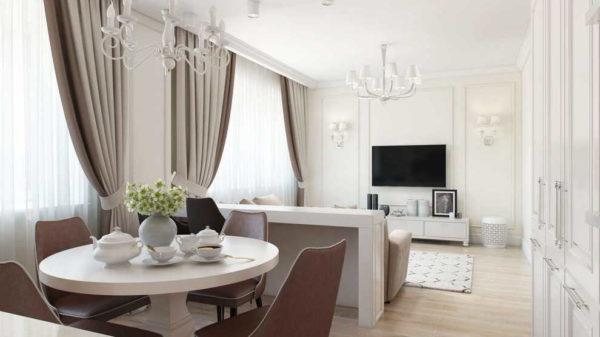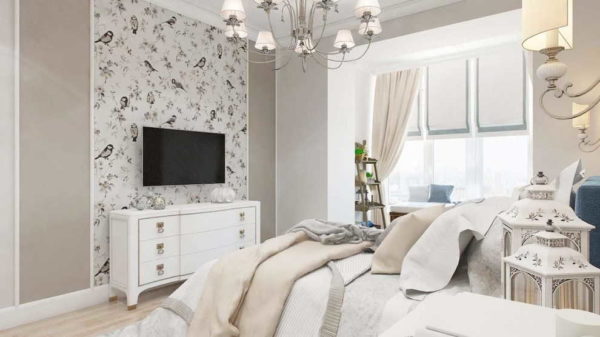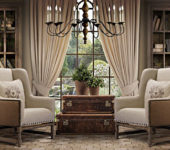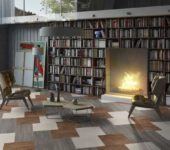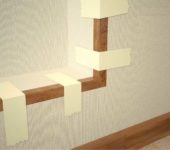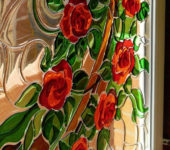How to trim the wall and ceiling with moldings
When developing the decor of the premises, I want to make them beautiful and unique. One of the techniques is moldings in the interior. These decorative strips help to make the space more interesting and harmonious.
The content of the article
What are moldings and what they are
Molding is a decorative strip of convex or concave shape. It is used for decoration, harmonization of interiors, visual correction of room imperfections. Moldings are narrow - a couple of centimeters wide, and wide - up to 20 cm. They are used for interior and exterior decoration, can be rigid or flexible. They come with a longitudinal relief (most often), with floral or geometric patterns.
At the installation site, moldings are ceiling, wall, corner. Corner ones are usually placed at the junction of the wall and ceiling. Moldings are made from:
- Styrofoam. The cheapest. They have a slightly loose surface, so they only go for putty and painting. Fastened to a flat wall with glue.
- Polyurethane. More expensive, dense, with a smooth surface. They are also glued to the walls and ceiling.
- Plastic. Smooth with a shiny surface. They wash well, have a long service life, but they are not combined with all materials, they are not suitable for all interiors.
- Gypsum. Heavier ones are made by casting. Massive elements are fastened with nails or self-tapping screws, thinner ones can be glued onto a special adhesive.
- Wood. Wooden moldings are attached to finishing nails or to regular ones without caps. Bonding with wood glue is possible. Fits well with classic, Scandinavian, Russian interiors. All those in which wood trim or decor items are present in one form or another.
- Metal. Very durable, but metal moldings can only be used in interiors of a certain type - minimalism, high-tech, loft.
- Polymer flexible. For the finishing of columns and rounded walls, flexible polymer moldings are used. They are attached with glue.
Plaster moldings date back to ancient times. It was they who became the model by which decorative strips for interior decoration were created from more modern and cheaper materials - foam and polyurethane.
Where can be used
Interior moldings are used in the following cases:
- To harmonize the interior. Smooth empty walls and flow are not always inviting. The use of moldings makes the interior more harmonious.
- For separating colors, materials, textures on the walls.
- For masking cables, communication lines, etc.
- For decorating joints of slabs, wallpaper.
- Zoning of premises.
- Decoration of doorways.
- Decoration of paintings, mirrors, wall TVs, etc.
The main function that moldings perform in the interior is decoration and decoration. At the junction of materials with different thickness, texture, color, this method of decoration allows you to turn an unaesthetic transition into a decorative element. The method is easy to install, most of it has a low cost.
At the junction of different materials
If tiles or wall panels are only laid on a part of the wall, the transition from tile / plastic to a flat wall does not look very presentable. To make this transition more attractive, special curb tiles are used, but they are too expensive - much more expensive than usual.It is no less interesting to arrange this joint with a molding. The decorative strip is mounted so that it covers the joint.
Width and thickness are selected for a specific interior and the thickness of the materials to be joined. Since we are usually talking about a bathroom, toilet or kitchen, it is more advisable to use materials that are easy to clean and are not afraid of high humidity. The best choice for tile joints is polyurethane. It can then be painted in the same color as the wall or tiles.
If the transition between plastic panels and a painted / bleached wall is decorated, a plastic skirting board can be used. Wooden panels or MDF panels, it is better to join the walls with wooden moldings.
The same technique works very well when you have to combine two colors or two textures. Moldings are used to separate and harmonize the joints. It can be an accent wall, which is very fashionable now.
But the accent wall doesn't have to be a different color or pattern from start to finish. For such a case - if the canvas or material occupies only part of the wall of a different color - the moldings will come in handy. They give a finished look to this finishing element.
Ceiling moldings
The ceiling is very often decorated with moldings. A large empty square just begs to be decorated with something. Usually, a corner molding is installed at the junction of the wall and ceiling. It can be thin and simple - with a simple relief, or it can be wide, patterned, under stucco molding. Moreover, this type of decoration is good not only for classic interiors. It fits into the loft and other modern trends, with the exception of minimalism, perhaps.
In addition, several decorative fragments can be located on the ceiling. For example, several moldings of different widths, but with a similar decor and profile. They can be located at a distance from each other. Often decorative fragments are used in the corners in the form of curls, corners curved to the other side, half-arcs and other similar decorations. They also put decorative ceiling rosettes under the central chandelier in classic interiors.
- This type of ceiling molding is suitable for almost any interior.
- If desired, decorative strips can be highlighted in color
- This option is good for classic interiors.
- A way to make the ceiling beautiful
- Another variation
- If stretch or suspended ceilings are made, the transition is also finished with moldings
- Options for decorating the ceiling with moldings
- Interior moldings: on the ceiling
- One of the easiest options for decorating a wall / ceiling joint with a polyurethane corner molding
- Small decorative element in the corner
- You can dock several decorative strips or place them at a certain distance
- The ceiling doesn't always have to be white
But not only in the corner or not far from it, ceiling moldings can be mounted. With their help, you can create a unique ornament on the ceiling. Geometrically correct shapes are created using polyurethane or plaster strips. With flexible molding, you can make smooth lines.
- In a long and narrow room, this technique helps to visually enlarge it.
- Classic design with geometric patterns
- If you use flexible moldings, you can make circles, arcs, smooth lines
- To highlight the central part of the ceiling
- Flexible molding on the ceiling again - smooth transitions from one diamond to another create an interesting effect
- Divide the ceiling into squares with molding - a classic decorating technique
- And no one said that decorative strips should be in tune with the ceiling ...
There is another technique - a coffered ceiling. This technique is usually used if you need to hide beams or some kind of flaw on the ceiling. In this case, moldings are also often used for decoration.
Recently, in most cases, polyurethane moldings are used in the interior. They are durable, easy to install, and not too expensive. All this makes them very popular.
Wall moldings
Wall moldings are not just strips. Frames are made of these elements, which can simply limit the part of the space in which the mirror or picture will hang. This selection helps to more clearly organize the space, highlight the subject.
Still frames from moldings can be filled with other finishing material. Previously, tapestries, brocade and other expensive fabrics were inserted into such frames. Today, more and more often they use a different type of decorative putty, wallpaper or just a different shade of paint.
Another common technique is the design of doorways. In addition to the standard frame of the opening, there are also frames above the door. This space is usually left empty and unused. So that there is no imbalance during complex decoration, molding is also glued here.
With the help of wall moldings, you can visually make the ceilings higher. For this, strips are installed at a certain interval. Not only frames can be made of them. These are decorative strips, and it is not too difficult to make patterns out of them.
All these decorating techniques require a lot of space, otherwise the room is too "overloaded". In small rooms, if they are used, then usually only strips at the junction of the wall and ceiling, or maybe a couple of thin stripes to separate different textures or colors. Most often, you can see moldings in the interior of the living room - these rooms are usually the most spacious. Moldings look good in bedrooms, but not in small ones, but at least medium ones.
Interior moldings: photos, ideas
When decorating rooms with moldings, one must take into account not only the geometry of the room, but also the style of decoration of furniture items. Decorative strips should have common features with the design of other interior items. Then the design will be consistent and harmonious.
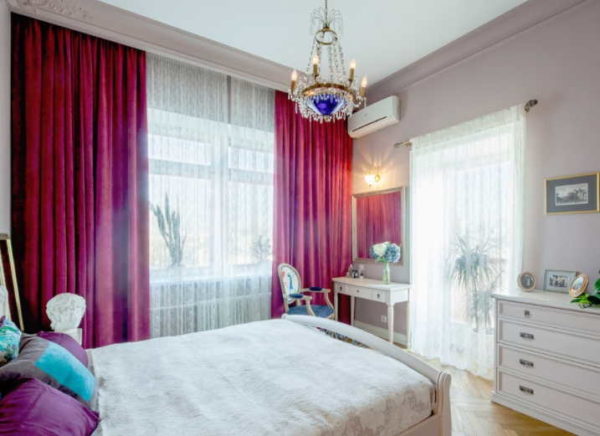
Wall moldings can be painted to match the walls. In this case, the moldings are not too striking, but the interior looks more harmonious.

If the ceiling were just white, there would be a clear disharmony - too congested walls, and an empty ceiling

